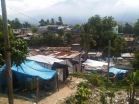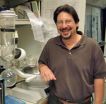(Press-News.org) More than 45 years after the Civil Rights Act of 1964, National Science Foundation (NSF) statistics show minority academic institutions still enroll a substantial number of minority students, but the percentage of minorities earning bachelor's degrees in science and engineering (S&E) from minority-serving institutions has declined over time.
Statistics published today in a report titled "Women, Minorities, and Persons with Disabilities in Science and Engineering: 2011" show that 26 percent of blacks earned S&E bachelor's degrees from historically black colleges and universities (HBCUs) in 2000, while only 20 percent earned them from HBCUs in 2008.
Published by NSF's National Center for Science and Engineering Statistics (NCSES), formerly the Division of Science Resources Statistics, the report charts the participation of women, minorities, and persons with disabilities in science and engineering education and employment.
According to the report's findings, underrepresented minorities--blacks, Hispanics, and American Indians--are less likely than whites to attend college or to graduate. About 53 percent of blacks and 35 percent of Hispanics versus 68 percent of whites attend college, while 19 percent of blacks and 12 percent of Hispanics versus 37 percent of whites graduate.
But for those underrepresented minorities who do graduate, the degree patterns are similar to those of whites. In fact, the shares of S&E bachelor's and master's degrees for underrepresented minorities have been rising for two decades since 1989.
For example, underrepresented minorities received 10 percent of S&E bachelor's degrees in 1989 compared to 17 percent in 2008.
Underrepresented minorities' participation in social-behavioral, computer and medical-other life sciences has increased faster than in other S&E fields.
The participation of blacks is substantially lower in S&E occupations, as well as in all professional and related science occupations than it is in the U.S. workforce as a whole. Blacks, who are about 12 percent of the U.S. population, make up only about 3 percent of all U.S. scientists and engineers. Moreover, they are a smaller percentage of engineers than they are of scientists.
Meanwhile, the share of full-time full S&E professorships held by underrepresented minorities has risen more slowly than the share held by women and has remained fairly flat in recent years.
Underrepresented minority women, who hold faculty positions, are less likely to have received federal grants or contracts than underrepresented minority men and women of other racial and ethnic groups.
###
This report is available online through the NCSES homepage of the National Science Foundation's website.
NSF supports all fields of fundamental science and engineering, except for medical sciences, by funding the research of scientists, engineers and educators directly through their own home institutions, typically universities and colleges.
Share of black S&E degrees from HBCUs declines in 2008
NSF report charts participation of women, minorities and persons with disabilities in science and engineering
2011-03-01
ELSE PRESS RELEASES FROM THIS DATE:
Lead contamination in Philadelphia's Chinatown discovered by Jefferson Emergency Medicine team
2011-03-01
PHILADELPHIA – Recently, a research team from the Department of Emergency Medicine at Jefferson Medical College of Thomas Jefferson University discovered an alarming amount of lead contamination in ceramic cooking and eating utensils sold in Philadelphia's Chinatown. The team, led be Gerald O'Malley, D.O., director of Clinical Research; and Thomas Gilmore, M.D., resident, purchased and tested a sampling of Chinese ceramics. Using a LeadCheck®, one area on each item was rubbed with a lead-detecting solution. In almost 30 percent of the items, the area turned pink or red, ...
Team delivers development aid via cell phone animations
2011-03-01
CHAMPAIGN, lll. — A farmer in Niger learns how to protect his crops from insects. A resident of Port-au-Prince or a rural Haitian village learns how to avoid exposure to cholera. An entrepreneur in Mali gets step-by-step instructions on extracting the oil from shea seeds to make shea butter she can sell at a local market.
These people are benefiting from a new approach to sustainable development education that reaches a much larger audience than traditional methods – and at a fraction of the cost. The initiative, led by a team of extension educators and faculty at the ...
A grudge match between humanity and death -- who wins?
2011-03-01
FAIRFAX, Va., February 28, 2011—Death can be terrifying. Recognizing that death is inescapable and unpredictable makes us incredibly vulnerable, and can invoke feelings of anxiety, hatred and fear. But new research by George Mason University psychology professor Todd Kashdan shows that being a mindful person not only makes you generally more tolerant and less defensive, but it can also actually neutralize fears of dying and death.
"Mindfulness is being open, receptive, and attentive to whatever is unfolding in the present moment," says Kashdan. In his latest research, ...
New marker found for Sanfilippo disease
2011-03-01
Sanfilippo disease is a rare disorder caused by the failure of enzymes to break down specific kinds of complex carbohydrates, resulting in their accumulation in cells and often severe physical and neurological problems – and sometimes early death.
In a paper published in the March 4 issue of the Journal of Biological Chemistry, researchers at the University of California, San Diego School of Medicine, led by Jeffrey D. Esko, PhD, professor in the Department of Cellular and Molecular Medicine, describe the build-up of a novel secondary metabolite in Sanfilippo disease, ...
WSU researcher creates patented personalized therapy that causes cancer cells to kill themselves
2011-03-01
A Wayne State University School of Medicine physician-researcher has developed a personalized therapy to treat a wide range of cancers. The treatment is based on a naturally occurring human enzyme that has been genetically modified to fool cancer cells into killing themselves.
The unique concept, patented by Wayne State University, was successfully demonstrated on melanoma cells that are resistant to routine treatments such as chemotherapy or radiotherapy. Melanoma is a perfect model for testing this new therapy because it is considered the most aggressive form of human ...
Human stem cells from fat tissue fuse with rat heart cells and beat
2011-03-01
If Dr. Doolittle is famous for talking to animals, then here's a story that might make him hold his tongue: According to new research published online in The FASEB Journal (http://www.fasebj.org), scientists have successfully fused human stem cells derived from subcutaneous adipose (fat) tissue with muscle cells from rat hearts. Not only did these cells "talk" to form new muscle cells altogether, but they actually beat.
"Recovery of regenerative cells located in the stromal vascular fraction of a patient's own subcutaneous tissue is relatively simple and can be used for ...
University of Maryland School of Medicine study identifies genes associated with binge drinking
2011-03-01
University of Maryland School of Medicine researchers have identified two genes associated with binge drinking that may open doors to new, more effective treatments for excessive alcohol drinking. The scientists found that manipulating two receptors in the brain, GABA receptors and toll-like receptor 4 (TLR4), "caused profound reduction" of binge drinking for two weeks in rodents that had been bred and trained to drink excessively. The study was published online the week of Feb. 28 in the journal the Proceedings of the National Academy of Sciences.
About 30 percent of ...
Intervention helps women manage weight during and after pregnancy
2011-03-01
PROVIDENCE, R.I. [Brown University] — Excessive weight gain isn't healthy at any stage of life, but during pregnancy it can do lasting harm to the mother and baby alike. Now researchers at Brown University and The Miriam Hospital are encouraged by a new study describing an intervention that helped pregnant women control their weight.
"This study suggests that a lifestyle intervention can help women manage their weight during pregnancy, prevent health problems during pregnancy, and reduce weight retention after having a baby," said study lead author Suzanne Phelan, adjunct ...
Gay rights movement born in 19th century Germany, scholar says
2011-03-01
Same-sex erotic relationships are as old as humanity, but our modern understanding of what it means to be homosexual—and the earliest gay rights movement—started in nineteenth-century Germany, according to an article by historian Robert Beachy from Goucher College.
The article, "The German Invention of Homosexuality," is published in a recent issue of The Journal of Modern History. Beachy's book on the subject, Gay Berlin: Birthplace of a Modern Identity (Knopf), is due out next year.
According to Beachy, modern conceptions of homosexuality began, ironically, with an ...
New peptide could be effective treatment for triple negative breast cancer
2011-03-01
A new peptide developed by researchers in Temple University's College of Science and Technology has demonstrated efficacy against triple negative breast cancer.
The leptin receptor antagonist peptide, developed by researchers Laszlo Otvos and Eva Surmacz, could become an attractive option for triple negative breast cancer treatment, especially in the obese patient population. The researchers published their findings online in the European Journal of Cancer.
According to the researchers, triple-negative breast cancers—which represent 10 percent of all mammary ...
LAST 30 PRESS RELEASES:
Making lighter work of calculating fluid and heat flow
Normalizing blood sugar can halve heart attack risk
Lowering blood sugar cuts heart attack risk in people with prediabetes
Study links genetic variants to risk of blinding eye disease in premature infants
Non-opioid ‘pain sponge’ therapy halts cartilage degeneration and relieves chronic pain
AI can pick up cultural values by mimicking how kids learn
China’s ecological redlines offer fast track to 30 x 30 global conservation goal
Invisible indoor threats: emerging household contaminants and their growing risks to human health
Adding antibody treatment to chemo boosts outcomes for children with rare cancer
Germline pathogenic variants among women without a history of breast cancer
Tanning beds triple melanoma risk, potentially causing broad DNA damage
Unique bond identified as key to viral infection speed
Indoor tanning makes youthful skin much older on a genetic level
Mouse model sheds new light on the causes and potential solutions to human GI problems linked to muscular dystrophy
The Journal of Nuclear Medicine ahead-of-print tip sheet: December 12, 2025
Smarter tools for peering into the microscopic world
Applications open for funding to conduct research in the Kinsey Institute archives
Global measure underestimates the severity of food insecurity
Child survivors of critical illness are missing out on timely follow up care
Risk-based vs annual breast cancer screening / the WISDOM randomized clinical trial
University of Toronto launches Electric Vehicle Innovation Ontario to accelerate advanced EV technologies and build Canada’s innovation advantage
Early relapse predicts poor outcomes in aggressive blood cancer
American College of Lifestyle Medicine applauds two CMS models aligned with lifestyle medicine practice and reimbursement
Clinical trial finds cannabis use not a barrier to quitting nicotine vaping
Supplemental nutrition assistance program policies and food insecurity
Switching immune cells to “night mode” could limit damage after a heart attack, study suggests
URI-based Global RIghts Project report spotlights continued troubling trends in worldwide inhumane treatment
Neutrophils are less aggressive at night, explaining why nighttime heart attacks cause less damage than daytime events
Menopausal hormone therapy may not pose breast cancer risk for women with BRCA mutations
Mobile health tool may improve quality of life for adolescent and young adult breast cancer survivors
[Press-News.org] Share of black S&E degrees from HBCUs declines in 2008NSF report charts participation of women, minorities and persons with disabilities in science and engineering

